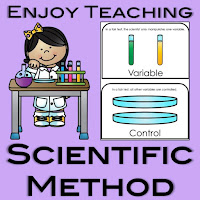Science is not science without practical - there is a reason why there is a section dedicated in each textbook on 'how science works' and how to carry out an experiment.Do you remember, back in your school days, on that first science lesson when you were shown some of the most spectacular chemistry demonstrations ever known? Is this not what inspired you to take chemistry beyond the classroom?
 I still remember my first chemistry lesson, where my teacher lit a Bunsen burner and shown a mixture of alcohol and copper salt into the flame, producing a bright green fire ball. It is demonstrations like this make us exciting and inspire us to learn. An effective teacher plans practical work with specific learning objectives in mind.
I still remember my first chemistry lesson, where my teacher lit a Bunsen burner and shown a mixture of alcohol and copper salt into the flame, producing a bright green fire ball. It is demonstrations like this make us exciting and inspire us to learn. An effective teacher plans practical work with specific learning objectives in mind.
But now very few schools have access to high levels of science expertise and that strategic leadership for the subject is weak. This raises concerns about the status of primary science.
Science should be taught through working scientifically. Hands-on practical learning is fundamental to science teaching and requires resourcing to be effective. Many schools do not have adequate resources or appropriate facilities to teach science.
 Primary science should develop pupils’ understanding of the world, nurture their curiosity and teach essential skills, including enquiry, observation, prediction, analysis, reasoning and explanation. Science provides a ‘motivating context’ for pupils to develop and improve skills in many areas, including literacy and mathematics.
Primary science should develop pupils’ understanding of the world, nurture their curiosity and teach essential skills, including enquiry, observation, prediction, analysis, reasoning and explanation. Science provides a ‘motivating context’ for pupils to develop and improve skills in many areas, including literacy and mathematics.Whether science is taught in a specialised laboratory (as in many secondary schools) or in a typical classroom with some specialist equipment (as in many primary schools), the fundamental idea is that students are presented with a simplified version of reality in which it is easier for them to be introduced to key scientific ideas.
Rather than simply suggesting that teachers should do even more practical work than they are currently doing there is a need to focus on how to improve the effectiveness of the practical work that science teachers already use, even if the result of this means that they end up doing less, but more effective, practical work in their lessons.
A key way to achieve this is to
help science teachers not only to see, but also to use, practical work as both
a 'hands on' and ‘minds on activity’.
The use and perceived value of
practical work varies not only from country to country but also from school to
school, and often from teacher to teacher. The UK is, however, one of a very
small number of countries in which school science lessons are taught
predominantly in laboratories rather than in classrooms .It is widely
recognised that more practical work is carried out in school science teaching
in the UK than in most other countries.





ReplyDeleteWow that was really a great read indeed. Expecting more such blogs in near future. Thanks for sharing.
Please help me suggest
The Best School in Perambur
The Best School in Vyasarpadi